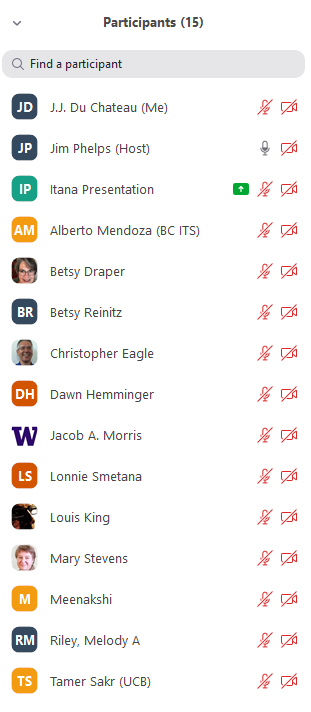
My Favorite Artifact - Lightning Round

Itana Steering Committee would love to do more of these Lightning Round type of sessions, so when you see one come up, feel free to jump in and volunteer as we'd love to hear what you are doing.
Thank you to the 6 volunteers for telling their stories today.
Alberto Mendoza (Boston College) - Self updating Archimate Diagrams
Thinking about how to better convey information to people who may not be inclined to read a lot of documentations. Found that I was doing as just as much work to describe the diagram, so looked for ways to automate that.
Using Archimate - an open standard, UML based, graphically language, used for architecture. Liked the semantic nature (active, passive, behavior elements) to create subject-verb-object diagrams that are easier to understand.
Architecture layers (e.g. Business, Motivation, Strategies, Application, etc.) for various audiences.
Uses Archi as a tool. Took a lot of thought to translate physical objects into representative components. Once done, was able to implement objects from other sources, such as asset inventory.
These are very "live" diagrams (i.e. models). Each object has attributes assigned to them to allow you to drive down, which allows for people to start trusting the information. Data is refreshed every day.
Tamer Sakr (UC Berkeley) - Event-driven Architecture
To be successful, this approach requires support of other top-down and bottom-up processes and governance.
Decided on an event-driven architecture to document an "event processing pipeline" to support migration to micro-services. Has 3 major components: 1) Event producers; 2) Event pipeline; 3) Event consumers. All events propagate and/or disseminate through this pipeline - both state events (change of state, such as student status) and processing? events. Many efficiencies found from removing direct database table connects, including those that were connecting to shadow databases. Full security and authorization structure in place to manage both updates and calls.
Meenakshi Sharma (George Washington University) - Research Lifecycle
Tech landscape around the research lifecycle was very fragmented. Request to implement integrations with home-grown solutions to support researchers, concern was inefficiencies doing this.
Mapped business capabilities against process maps and technical solutions to understand the landscape. Worked with researchers and IT staff to understand impact of changes. Discussed with vendors to discover ways to automated research lifecycle.
Developed roadmaps and workflows to address inefficiencies and gaps, including new automation tool implementations. Was well received and others have now been engaged.
Lessons learned include need to be patience and persistent with this approach as others wanted short term solutions hoping their new ERP solution would fix their problems. Took time to build trusts on both sides.
Betsy Draper (Kansas State University) SIPOC (Suppliers Inputs Process Outputs Customers
Means to capture who, what and how in a process - can google SIPOC for more inform.
Use this as a starting point for almost every BizArch engagement.
Find a high level of satisfaction from clients cause get more immediate results from engagement.
Use it to help determine what outputs are never inputs to a later steps and are they necessary. Helped identify some unknowns, shadow systems, compliance requirements, business impact analysis for Business Continuity efforts, etc.
Find that clients have now started using SIPOC for their own efforts.
Really helps shift away from WHO does the work and focus on the process and user experience.
Pain point to start using SIPOC was ERP work documenting similar processes around campus.
Melody Riley (Oregon State University) - Current State Ecosystems Visuals
Trying to get the business to understand the complexity of the ecosystem. Areas were targetting individual business processes and not seeing the hairball that exist in IT and processes involved.
Take "detective:" approach to to capture full ecosystem so business area can say "yes, this is our ecosystem", "yes, these are areas of improvement"
Help capture and show upstream/downstream impacts that weren't readily known., complexity to change, highlight opportunities, understand UX elements, etc.
Starting using Mirro since Covid-19 for online collaborative capabilities.
Have also doing current-to-future state visuals to show what future state may look like.
Dawn Hemminger (U of Washington) - Weighted Decision Matrix
Very simple tool - found it can be used for more than technical solutions.
Used for request for new unit testing tool to compare options - forced team to ask important questions. Weighting helped for characteristics that were more important.
Helped ensure we were making an informed decisions.
Also used it to inform how to organize teams - mapped people, process, and work attributes/characteristics against team structure options.
Great tool to make you stop and think and start having conversations.